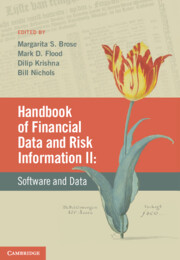PART VI - IMPLEMENTATION OF DATA AND ANALYTICS PROGRAMS
Summary
The previous sections of the Handbook have comprehensively covered the various aspects of consolidating data within a financial institution. These began with the regulatory imperative and advances in risk management. The Handbook also went into detail on various kinds of data found in these financial institutions. Where the first volume of the Handbook focused on the requirements for a strong risk information infrastructure, the second volume of the Handbook has focused on implementation issues. Data are intimately connected with the business processes that generate, modify and use them – this was covered in Part IV. Part V covered a plethora of technologies that may be leveraged to build a strong technology back-bone for risk management. Yet for all the advances made in understanding risk data, and plentiful and relatively cost-effective technologies available for integrating information at this time, many risk information projects still struggle to accomplish their goals. Even when they do succeed, they often do this at the cost of large expense- and time-overruns. There are typically two reasons for this.
First, the scope and scale of risk information projects can be vast, usually covering a large part of a financial institution (not coincidentally, reflected in the scope and size of this Handbook). Project teams themselves may grow to 100 or more resources that may touch several hundred other people in a large financial institution. The challenge of putting together an effective project plan and executing it cannot be underestimated.
- Type
- Chapter
- Information
- Handbook of Financial Data and Risk Information IISoftware and Data, pp. 381 - 386Publisher: Cambridge University PressPrint publication year: 2014



